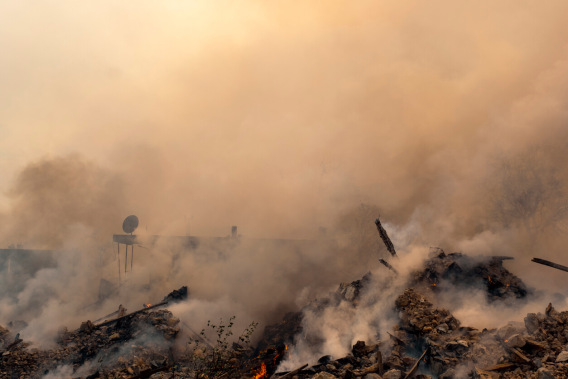
Health officials are warning Maui residents to exercise caution during cleanup following deadly wildfires as ash and debris may be filled with toxic substances,…

Written by Michelle Whitmer | Edited by Walter Pacheco | Scientifically Reviewed by Arti Shukla, Ph.D.

Natural disasters such as wildfires, hurricanes, floods and tornadoes can damage asbestos-containing materials and lead to asbestos exposure among first responders, cleanup crews and nearby residents. Learn how to prevent asbestos exposure when preparing for and cleaning up after a natural disaster.
A large number of homes and commercial buildings constructed prior to the 1980s were built with asbestos materials. Those products are considered safe as long as they are in good condition. But once ripped, broken, burned, blown or washed away, the products release toxic asbestos fibers into the air.
Breathing in these fibers in the aftermath of a natural disaster can lead to serious health conditions years later. The more someone is exposed to asbestos, the higher their risk of developing asbestos-related diseases such as a cancer called mesothelioma.
Natural disasters pose dangers from the moment they occur. People don’t often consider health risks after a tornado rips through their neighborhood or a flash flood destroys their personal possessions.
Asbestos exposure isn’t an immediate danger such as live electrical wires, gas leaks or unstable infrastructure. It also isn’t as apparent as more obvious health risks such as black mold. Asbestos fibers are microscopic and travel by air or in clouds of dust, so you can be exposed and not even know it.
It is essential to consider and properly prepare for asbestos exposure prevention when planning for natural disasters and severe weather. Knowing how to keep safe from asbestos after a disaster can help prevent health conditions later in life.
As the first people on the scene, emergency response crews and early response volunteers face an increased risk for asbestos exposure in the wake of a natural disaster because of all the debris. The risk of health effects increases over time and depends upon frequency and amount of exposure to asbestos to these workers.
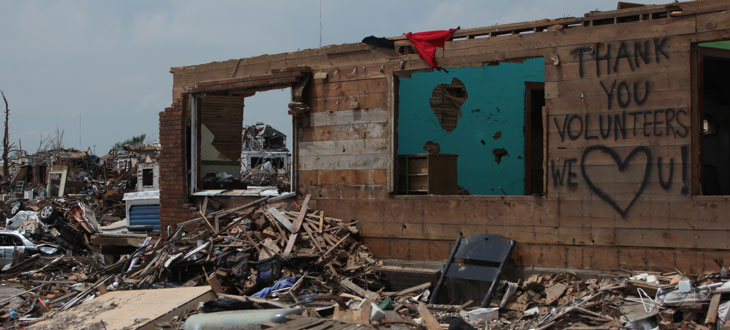
Homeowners of damaged properties also face these risks and should alwaysuse caution when cleaning or searching through debris.
There are dozens of asbestos-containing products in older construction such as single-family homes, apartment complexes, office buildings, churches and schools. These products are considered safe if they are in good condition and left undisturbed in walls, floors and the ceilings and roofs of structures.
But natural disasters pose a threat to these products which can be damaged by winds, fires, floods and earthquakes.
If asbestos-containing materials are suspected during cleanup efforts, experts recommend you leave them alone. Stirring up asbestos-containing debris can result in airborne asbestos fibers, and exposure is highly likely at that point.
Different types of natural disasters present a variety of asbestos exposure risks. For example, tornados may carry asbestos debris from one location to another, while floods may contaminate local waterways and neighborhoods with asbestos materials.
Fires present a greater risk to firefighters than other emergency responders. Hurricanes pose a variety of exposure threats from related tornados and flooding.
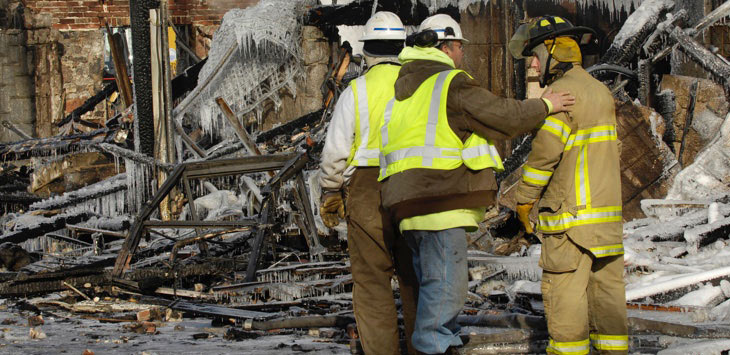
People with cancer have more to consider and prepare for when planning for a natural disaster. Having an emergency plan in place that your family is on board with can help considerably when disaster strikes.
It’s also a good idea to talk to your oncologist before developing your plan. Ask for important contact information and steps you should take in case a disaster causes any changes to your treatment schedule.
In addition to sharing digital copies of your plan with your family, make sure each person has a printed copy. You may want to share your plan with extended family members and trusted neighbors in case you need to rely on them during or after a disaster.
Only a filter rating designation of 100 will protect you against microscopic asbestos fibers in the air. N-100 and P-100 respirators filter at least 99.97% of airborne particles. Filters with the “P” designation are also strongly resistant to oily particles.
These masks will also protect you from other hazards such as mold damage. They can be purchased online or at your local home improvement store. Disposable masks generally cost around $10 each, while half-mask or full-face respirators can be $50 or more.
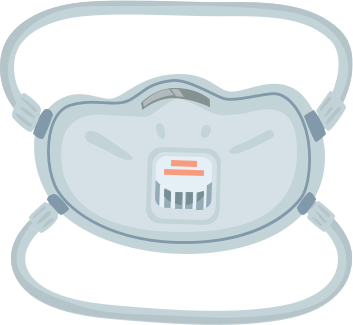
Wildfires pose a threat for asbestos exposure as they move into cities and residential neighborhoods with structures built before 1980, when asbestos was commonly used in construction.
When these structures catch fire, asbestos products become damaged and release carcinogenic fibers that become airborne and transportable in smoke.
According to the Congressional Research Service, there are an average of 67,000 wildfires each year and 7 million acres burned annually. In 2018 alone, more than 58,000 wildfires burned nearly 9 million acres nationwide.
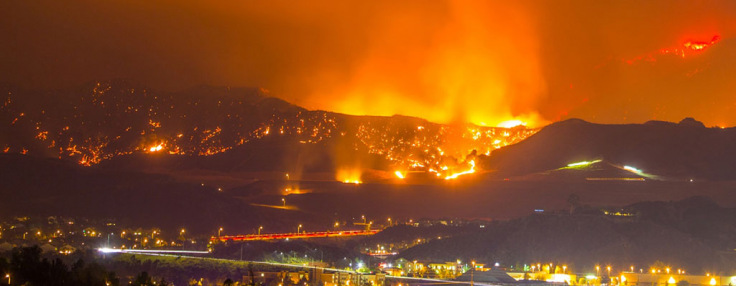
Wildfires most commonly occur in the East, including the central states. However, fires in the West are the largest and burn the most acreage.

In 2018, 87% of the acreage burned in the East was nonfederal land, while 63% of the acreage burned in the West was on federal land such as national forests and national parks.
If there is a wildfire in your area, get to safety right away. Evacuate if you are told to do so and know your community’s evacuation routes.
According to Ready.gov, FEMA’s national public service campaign encouraging Americans to plan ahead for disasters, it recommends using an N-95 mask to prevent breathing in airborne particles. But these masks are not designed to filter finer particles such as asbestos fibers.
Only an N-100 or P-100 respirator will properly filter out tiny asbestos fibers that may be mixed with smoke and ash.
If your home or neighborhood was built before 1980, you are at higher risk of asbestos exposure from a wildfire. But keep in mind that wind can blow smoke, soot and ash for miles, potentially exposing residents in nearby communities to asbestos fibers mixed into these particles.
Seek help from a qualified asbestos abatement company if you believe large quantities of asbestos materials were damaged during a fire. These professionals are trained in decontamination and safety procedures.

Health officials are warning Maui residents to exercise caution during cleanup following deadly wildfires as ash and debris may be filled with toxic substances,…

Hurricanes present three primary sources of destruction: Powerful winds, storm surge and rain. Storm surges lead to flooding along coastlines, damaging homes, hotels and public spaces. Powerful winds and tornadoes can destroy homes and buildings, while heavy rains cause flash floods.
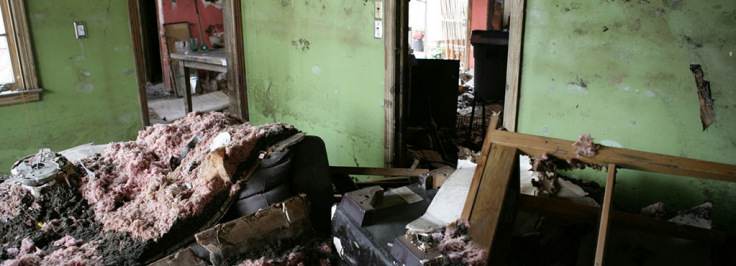

9,375,000 cubic feet of debris transported from New Orleans homes to nearby landfills following Hurricane Katrina contained asbestos.
Debris can expose homeowners, emergency workers and volunteers participating in the cleanup process to hazardous materials that can contain asbestos. The amount of debris that piles up after a hurricane is significant and can quickly overwhelm a community and breakdown normally strict guidelines for handling hazardous materials.
Hurricanes most often impact the East Coast and Gulf Coast of the United States. In 2022, hurricane Ian devastated much of the East Coast between Florida and South Carolina.
The most important thing you can do to protect yourself from asbestos exposure after a hurricane is to wear safety equipment during cleanup and restoration efforts. This includes a NIOSH-approved N-100 or P-100 respirator and other protective gear such as googles, gloves, boots and disposable coveralls.
While wildfires and hurricanes pose high risks for asbestos exposure, so do other natural disasters such as floods, tornados and earthquakes.
The key concern is the damage these disasters can cause to older homes, buildings and other structures containing asbestos materials such as drywall, insulation, floor tile and sheet roofing.
Knowing how to protect yourself and your family from asbestos during and after these natural disasters is essential to your long-term health.
Asbestos was used in more than 3,000 construction materials and manufactured products and was used as a part of new home construction or remodeling until 1980.
A home affected by flood waters becomes a source of asbestos exposure because damaged flooring, drywall and ceilings may contain asbestos. Water can damage even the strongest structures and disturb asbestos products in ways that release fibers when the material dries.
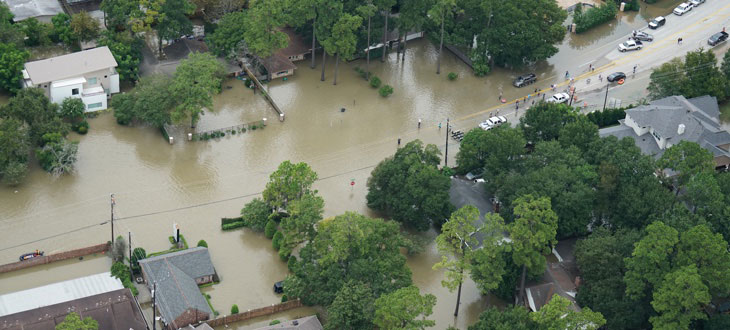
Floods can also disturb naturally occurring asbestos deposits. Asbestos fibers from natural deposits are easily carried by flood waters into communities and local water sources.
For example, in parts of the North Cascades in Washington, the toxic mineral was released by a slow-moving landslide and then was carried into the Swift River. When the river flooded, asbestos fibers were deposited into residents’ yards and homes.
For severely damaged structures built before 1980, demolition should only be performed by individuals who are trained in the asbestos NESHAP regulations. A MDEQ-certified asbestos abatement supervisor should be on-site or available by phone to provide guidance and assistance.
All demolition workers should use equipment specifically designed to protect them from asbestos exposure during demolition and handling of debris, especially respirators that are required by OSHA regulations. It is recommended to wet the structure, and, if the walls are still standing, they should be wrapped to confine the asbestos particles.
Tornadoes can destroy property and potentially cause exposure to asbestos among people who clean up the debris. The EPA and several state-affiliated departments of health and natural resources have issued guidelines for effective management of asbestos building debris to minimize exposure.
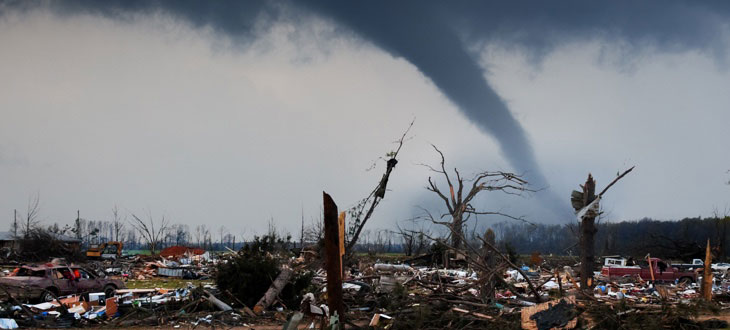
Earthquakes are the vibrations caused by blocks of earth breaking and moving under stress. They strike suddenly, and often create significant damage to buildings and can also trigger tsunami waves that damage coastal communities.
In the U.S., earthquakes can strike any location at any time. However, most occur along the West Coast, primarily in California, according to the U.S. Geological Survey.
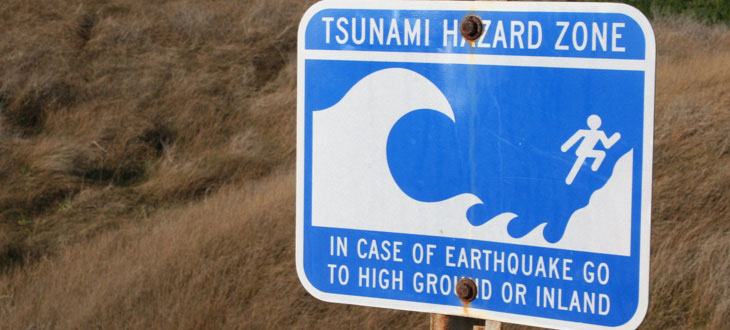
During cleanup of damaged and destroyed buildings after an earthquake, it is likely that there will be a need to handle, break up and dispose of asbestos-containing materials.
Much of this work may be undertaken by temporary laborers, volunteers and local residents who are unaware of the hazards of asbestos and who may be unable to identify asbestos products.
It is unlikely that the workers will initially be provided with appropriate personal protective equipment. Many people will also be unaware of abatement methods for the proper cleanup and removal of asbestos materials.
As a result of the cleanup operations, there may be an accumulation of asbestos-containing waste that will present a hazard to people in thelocal environment and those living in close proximity to the site offinal disposal.
It is important to be prepared and have a safety plan in place in the event natural disasters strike. But the after effects of these disasters are also a cause for concern.
The most important thing you can do to prevent asbestos exposure following a natural disaster is to have protective equipment on hand in an emergency response kit. This includes a NIOSH-approved N-100 or P-100 respirator for everyone in your household.
Secondly, remember this rule: If you’re not sure, don’t mess with it. When cleaning up after a wildfire or storm, always use caution.
Even with a protective mask, asbestos exposure can occur from fibers sticking to your clothes and exposing yourself or your family after cleanup efforts. Fibers could potentially be inhaled or ingested if your mask isn’t fitted properly.
If you know the cleanup site has damaged asbestos products, it is recommended to get the help of asbestos abatement professionals to remove and dispose of the materials safely and under EPA regulations.
You can also contact these national emergency response organizations for help:


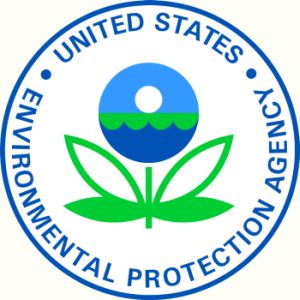
Stay up-to-date on treatment, research, clinical trials, doctors and survivors
The information on this website is proprietary and protected. It is not a substitute for professional medical advice, diagnosis or treatment. Any unauthorized or illegal use, copying or dissemination will be prosecuted. Please read our privacy policy and terms of service for more information about our website.
This website and its content may be deemed attorney advertising. Prior results do not predict a similar outcome.
The Mesothelioma Center’s claim as the most trusted resource is based on our more than 150 5-star Google and BBB reviews. Our organization also helps more than half of all mesothelioma patients annually diagnosed.
Your web browser is no longer supported by Microsoft. Update your browser for more security, speed and compatibility.
If you are looking for mesothelioma support, please contact our Patient Advocates at (855) 404-4592
The Mesothelioma Center at Asbestos.com has provided patients and their loved ones the most updated and reliable information on mesothelioma and asbestos exposure since 2006.
Our team of Patient Advocates includes a medical doctor, a registered nurse, health services administrators, veterans, VA-accredited Claims Agents, an oncology patient navigator and hospice care expert. Their combined expertise means we help any mesothelioma patient or loved one through every step of their cancer journey.
More than 30 contributors, including mesothelioma doctors, survivors, health care professionals and other experts, have peer-reviewed our website and written unique research-driven articles to ensure you get the highest-quality medical and health information.
My family has only the highest compliment for the assistance and support that we received from The Mesothelioma Center. This is a staff of compassionate and knowledgeable individuals who respect what your family is experiencing and who go the extra mile to make an unfortunate diagnosis less stressful. Information and assistance were provided by The Mesothelioma Center at no cost to our family.LashawnMesothelioma patient’s daughter


Whitmer, M. (2025, September 25). Asbestos and Natural Disasters Guide. Asbestos.com. Retrieved January 20, 2026, from https://www.asbestos.com/asbestos/natural-disasters/
Whitmer, Michelle. "Asbestos and Natural Disasters Guide." Asbestos.com, 25 Sep 2025, https://www.asbestos.com/asbestos/natural-disasters/.
Whitmer, Michelle. "Asbestos and Natural Disasters Guide." Asbestos.com. Last modified September 25, 2025. https://www.asbestos.com/asbestos/natural-disasters/.
An occupational scientist or another expert who specializes in occupational hazards reviewed the content on this page to ensure it meets current scientific standards and accuracy.

Arti Shukla, Ph.D., is an internationally renowned asbestos researcher known for her achievements in identifying biomarkers that cause mesothelioma. She is the director of the Shukla Research Lab, as well as a professor of pathology at The University of Vermont Larner College of Medicine.
Our fact-checking process begins with a thorough review of all sources to ensure they are high quality. Then we cross-check the facts with original medical or scientific reports published by those sources, or we validate the facts with reputable news organizations, medical and scientific experts and other health experts. Each page includes all sources for full transparency.
Please read our editorial guidelines to learn more about our content creation and review process.
